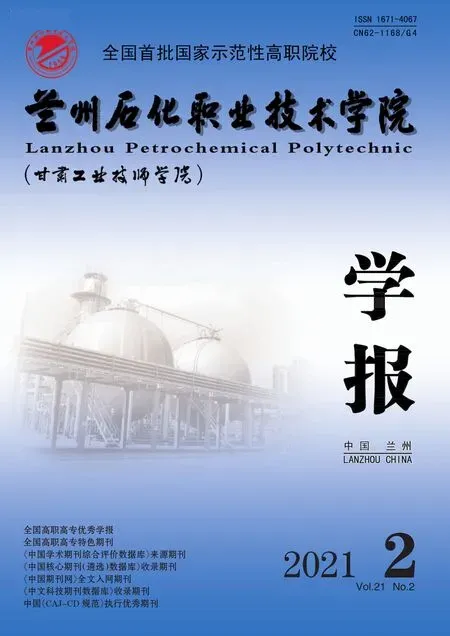Blended Learning: Integrating Technology with Language Teaching
HU Hai-yun
(The Faculty of Arts The University of Melbourne,Melbourne Australia VIC3010)
Abstract:Under the premise of vigorous development of science and technology in today’s society, language teaching should appropriately employ science and technology in classes.Based on the three theories proposed by Laurillard(2013): the role of science and technology, teachers’ teaching views, and students’ learning motivation, this paper explores how to effectively mix these aspects in the process of language teaching.Making technology play an optimal role in language teaching.Some suggestions are made for language teaching design in the conclusion.
Keywords: technology; learning motivation; blended teaching
What is blended learning?
According to Gruba and Hinkelman(2012)[1], blended technologies create an integrated environment for teaching and learning because it combines face-to-face learning and technologies.Teachers in second language classrooms should select suitable technologies under the principles to achieve specific goals.That is teachers, select technologies rather than driven by technologies.Such an integrated environment can provide students more opportunities to enhance their learning.Since blended learning has technical support which can reduce restrictions in the learning process.Besides, Alasraj and Alharbi(2014,p.13)[2]defined that blended learning is to integrate internet-based learning into traditional learning.Traditional learning means studying in the classroom that everyone has to attend in-person.While internet-based learning provides learners opportunities to manage their own study pace without time and location restrictions.Internet-based learning allows people to remotely teaching and learning.
Understanding key concepts
Laurillard(2013)[3]mentions that technology is widely used in education in recent years, the problem is how can individual teachers integrate technologies into their daily work? This paper states this wide problem based on the explanations of three concepts: the role of technology, formal learning from teachers’ perspective, and study engagement.
Firstly, teaching as a design science indicating imparting knowledge is a designed process that depending on the knowledge and experience that are known.Because people involved in this process have to exchange their minds and negotiate with each other to achieve specific learning goals.In this process, teachers need to think about how to use the potential of technologies to facilitate teaching.Before using technologies, it is fundamental to have an understanding of what we want from teaching and learning.
Therefore, the second concept is about teachers’ views of formal learning.According to Margaryan and Collis(2008, p.305)[4], formal learning is guided by instructors following a structured system via instructional materials.Formal learning is typically delivered in the classroom; it also can occur in web-based labs by using technologies.Although the definition of formal learning is ambiguous, people at least agree that formal learning is structured, oriented by specific goals.This paper focuses on the step of setting specific goals from the teachers’ perspective that learners should achieve after they graduated.
The last concept discussed in this paper is that students’ motivation to study is various.Individual differences are also important to consider when teachers planning the course.Motivation is defined as the desire of individuals to learn the language and the degree of effort they will make in learning(Gardner, 1985, p.10)[5].Typically, motivation can be classified as intrinsic and extrinsic(Laurillard, 2013).Extrinsic motivation indicates that language learning is initiated by external factors, such as rewards and avoid punishment.While intrinsic motivation is that learners learn a language to fulfill themselves.Students always have a mix of motivations and shift their motivations during learning(Laurillard, 2013).Hence, teachers should not only identify types of students’ motivation but also help students to balance their various motivations for better learning results.
Situating concepts in previous studies
As Laurillard(2013)pointed out, the development of technologies is rarely driven by education.However, it is necessary for educators to appropriately apply technologies into the teaching program.Language teachers have to acknowledge the popularity of technologies rather than resist them or simply adapt to new technologies.Although the initial aim of technologies was not for education, educators need to find its potentials and use them to achieve an educational purpose.Fryer, Coniam, and Carpenter(2020)[6]suggested that Mondly, a chatbot for language learning, which is developed in 2016.
Interestingly, the development of Mondly was inspired by the previous technical production: Cleverbot, which was designed for entertaining human users.Mondly successfully integrated new technologies, such as VR(Virtual Reality)and AR(Augmented Reality)into language learning.These new technologies provide online learners with a more authentic learning environment which benefits their learning experience.Mayer(2017)listed specific guidelines for digital media based on the analysis of learners’ needs which directly improved e-tools development(as cited in Fryer, Coniam, Carpenter and L? pus neanu, 2020)[6].This echoes Laurillar’s statement that “education must begin to driven its use of technology”(2013, p.17).
The success of the digital environment does not mean that teachers are unnecessary, instead, the process of language learning still needs instructors to facilitate.For example, Jin, Su, and Lei(2020)[7]proposed a blended learning project to examine if blended learning benefits students’ argumentative writing and how students treat this learning method.Firstly, students in the same group needed to discuss their opinions about the required reading and present it in the classroom.And then, students collaboratively wrote an argumentative essay online.The findings of this study indicate that students would have in-depth arguments via offline discussion and have fewer language problems in writing in the online collaborative tasks.Overall, students had a positive attitude to this blended project.Such blended learning was designed by instructors, that is, instructors have responsibility to provide students the better way to learn.
Besides, Hannibal Jensen(2019)[8]found that young Danish children(ages 7-11)with higher cognitive motivation can engage in English learning more than those with lower cognitive motivation.This finding suggests that language teachers have to recognize different motivation brought by children when they come to school.Trying to know more about children and design suitable plans for them, because the result of language learning is an interaction between students’ personal goals and instructors’ work.
In sum, I think the process of teaching and learning is complex, there must have specific principles made by education communities, including students, instructors, and other related apartments to ensure this complex work can successfully use technologies to optimize learning outcomes.

